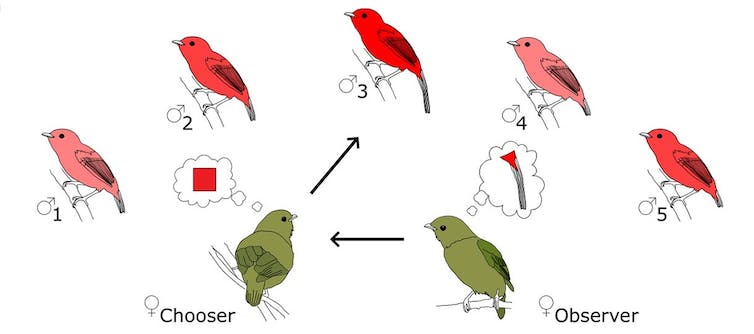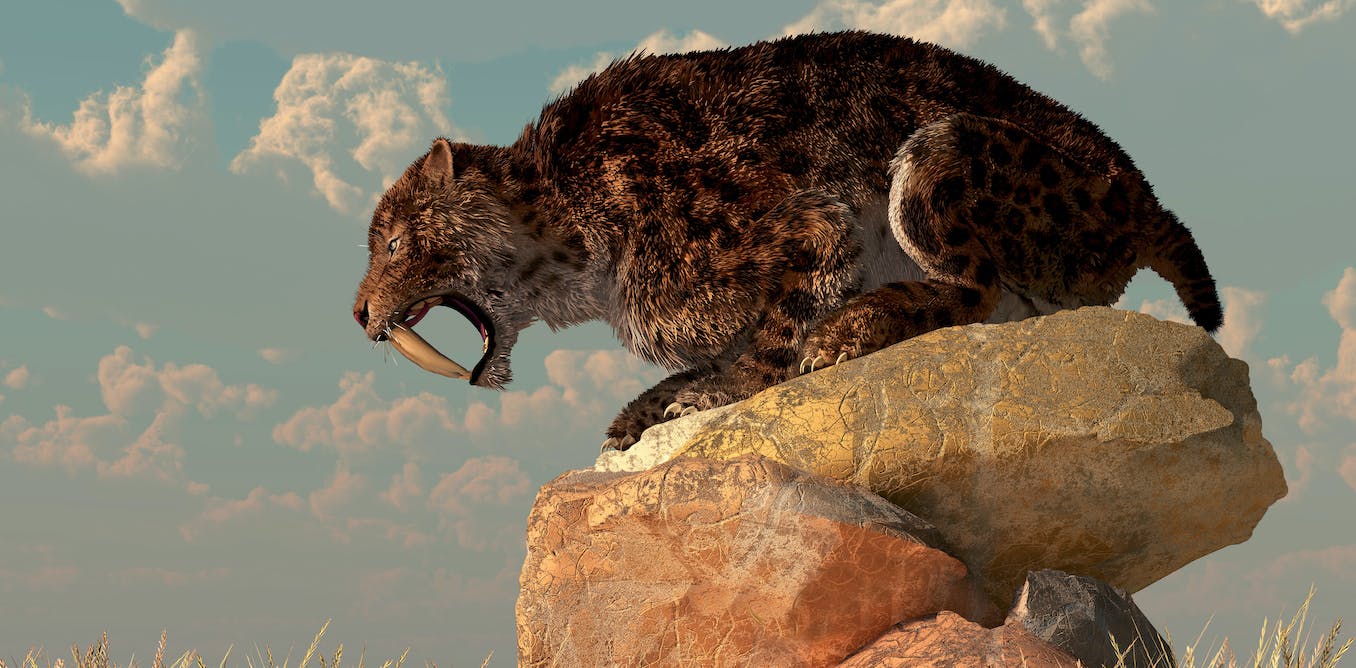My friend recently changed their favourite celebrity crush from Anna Kendrick to
Lily James. While some people could see the attraction, others might
not. So, what is it that attracts us to potential mates? A new study suggests that female animals learn from other females to prefer distinctive males as mates.
Sexual selection involves the evolution of traits such as the long, elaborate tail
of the peacock. These traits have evolved to enhance an animal’s chance of attracting a mate, rather than to enhance survival ability. A weighty, colourful tail is a hindrance if you’re trying to evade a predator.
Generally, males compete for access to females, as the male investment in
offspring –- often only sperm -– is much less substantial than the effort a female puts in, producing eggs (which are larger than sperm), pregnancy and probably raising the offspring. So it is much more costly for a female to mate with a poor-quality male than vice versa, as the male can move quickly on to the next female.
This has led to the evolution of a plethora of sexually-selected male traits in the animal kingdom, and some very choosy females.
Historically, scientists focused on the interactions between males and often ignored the way females shaped evolution. But now researchers are paying more attention to the fascinating effects of female agency.
The new study, from Florida State University in the US, developed a mathematical model to try and explain some of the gaps in sexual selection theories.
First, it’s helpful to understand what research has shown about what makes a male attractive in the animal kingdom. In terms of looks, the males with the largest
cheek pads or flanges are most appealing to female orangutans, whereas males with the longest “swords” drive female swordtail fish wild.
Not just about looks
It is not just physical appearances that females choose their mates for.
The most pungent-smelling male ring-tailed lemurs attract the most females. There are also plenty of examples of more complex traits, including the song and dance moves of birds of paradise, or the crop-circle patterns made by male Japanese puffer fish to impress females.
And, it’s not always the males that compete to be chosen by the females. Male stalk-eyed flies choose females based on the distance between their eyes, and find wider eyespans more attractive.
Current theories of sexual selection involve animals choosing mates due to signs they have good genes– like a long, elaborate tail. A strong, virile mate signals they will produce healthy offspring.
Alternatively, animals that have a hindersome trait, yet still survive, are probably of high genetic quality. There are also sensory bias theories, where mating preferences are a by-product of natural selection of the senses.
For example, the hearing range of female Tungara frogs is biased towards lower frequencies, coinciding with their preference for the lower-frequency calls produced by larger males.
Yet, none of these theories explain why there is so much variation in traits of males of the same species, or why female preferences can vary over time or within a species.
Rare sex appeal
The new study looked at whether females’ mate choices are based on watching more
experienced females choose their mates. It is well-known that animals can
learn from watching others. For example, young crows learn how to make basic stick tools by watching their parents.
Learning has also been shown in mate choice as females observing others with
a male are more likely to choose that male themselves, or one with similar
traits.
The researchers based their model on the inferred attractiveness hypothesis,
where inexperienced females compare the qualities of a male, chosen by an
experienced female, to the qualities of all males.
For example, if a female sees an experienced female with a bright coloured male, she might seek a brightly coloured mate too. This would lead to bright colouration becoming more common, reducing variation. However, the inferred attractiveness hypothesis still doesn’t explain why there is so much divergence between males.
The US study was the first to consider that females may not be mind readers and may make mistakes when they try to copy other females.
In the hypothetical example illustrated below, the experienced female prefers males with redder plumage, so chooses to mate with male number three. The inexperienced female observer thinks that male number three’s long tail made him more attractive than his peers.
Florida State University/PLOS Biology, CC BY
The researchers used a computer simulation based on a mathematical model
of a population in which males mated with many females. The model involved males with two traits, with only two variants each (bright/dull colour and long/short tail length).
Their model showed that when females chose males based on the same trait that
the experienced female went for, these traits became fixed in the population, with
no variation. When females chose a more distinctive male, this caused the rare trait to become more common and, subsequently, less attractive.
This resulted in switches in female preferences over time, rather than a single attractive trait outcompeting the others.
We won’t know whether this happens in real life until scientists run field studies. But this is the first theory of sexual selection that explains how variation might be maintained in populations.
My current celebrity crush is Ryan Reynolds due to his good looks and
sense of humour. But I now wonder what other people might see in him – is it those eyes, or that smile, or something completely different?




